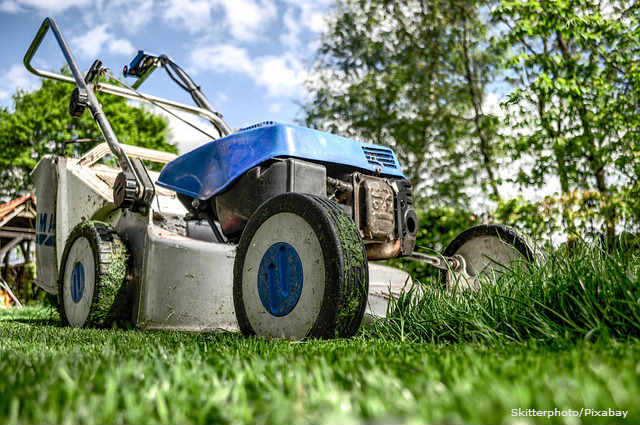Your lawn is such an important feature of your home -- when it's green and lush it's perfect for playing with the kids, laying out in the sun and a perfect backdrop for decorations. Make sure you keep your lawn looking it's best with these lawn care and maintenance tips from Movers.com. 
A healthy lawn is easily recognizable, it's like a smooth green carpet welcoming you to your home. How do you get your lawn to look like that?It's easier than you think. To get a lush, green lawn you need to focus on these three important aspects of lawn maintenance: sun, water and fertilizer. Once you've figured those out, you'll be smooth sailing.
Soil
Test the soil's pH with either a do-it-yourself test from the home improvement store or bring a sample to a local nursery or the agricultural center of your college. Once you've figured out your soil's pH you'll know what your soil is lacking and what additions you'll need to make in order to end up with the lawn of your dreams.
Seeding
If you're trying to regrow a patch of lawn that's been damaged by winter's harsh cold, Sparky's bathroom business or your own walking seeding is an important step to getting and being able to maintain a healthy lawn. You can plant new grass in a smaller area such as one damaged, or if you're starting entirely from scratch, the entire area of your lawn.
To seed and plant new grass in your lawn you'll need to first aerate the soil. Once the soil is loosened you can spread the grass seed evenly over the tilled area by hand or with a seed spreader. Cover the area with a light layer of soil and water appropriately. Be careful not to over water the area as that will cause the lawn seed to drown.
Fertilizer
Fertilizing your lawn will provide the nutrients it needs to flourish and grow thick and green. You could use your own compost material or store-bought fertilizer. You will need to spread the fertilizer evenly over the lawn so a spreader is advised. Seeding and fertilizing should be done during the cooler times of the spring and fall in your area.
- For southern states the spring seeding should be done between February and April; in the fall during October and November
- For northern states the spring seeding should be done between April and early June; fall seeding between September and early October.
Cutting the lawn
How long or short you mow your lawn matters. If you cut it too short heat from the sun can prevent new growth and leave you with dry, yellow patches in your lawn. If you leave it too long, it could become too tall and end up drooping not to mention grass that is too tall becomes a sign for burglars that you're out of town.
Raising the blade on your mower to the highest setting will save you the trouble of cutting too short. It will cut the top third portion of the grass allowing new growth to flourish and it will allow better root development.
Watering
Watering your lawn is just as important as watering your garden. Grass is a plant and plants need water to grow. When watering your grass make sure not to water too much otherwise you'll drown the roots and it could end up dying. A good deep watering once a week is usually enough. If you've planted new seeds however, water every day for about five to 10 minutes only. The goal when watering new seeds is to water them enough without causing runoff that will bring the seeds with it.
Keep in mind different types of soil will react differently to watering. Clay soils will hold onto water much longer than a sandy, gravely soil.